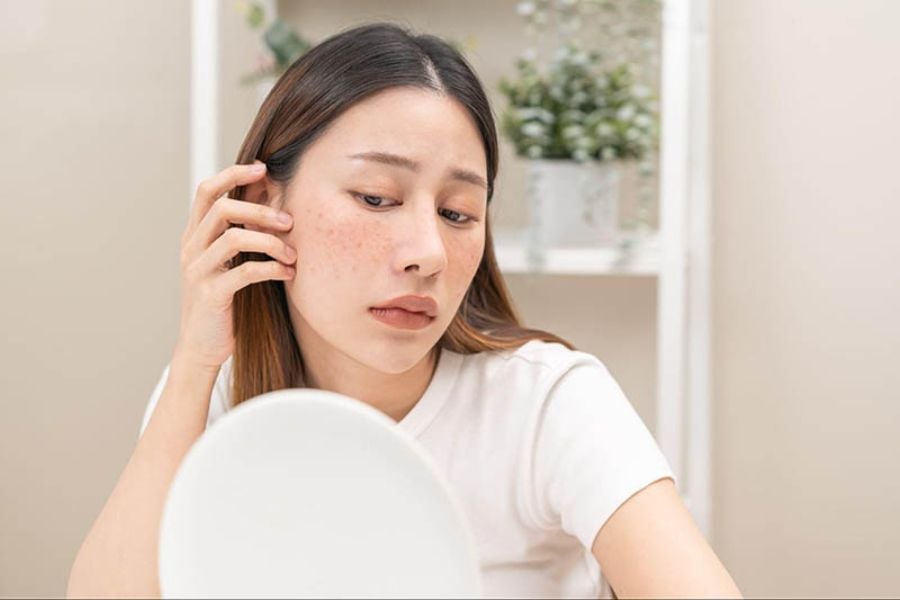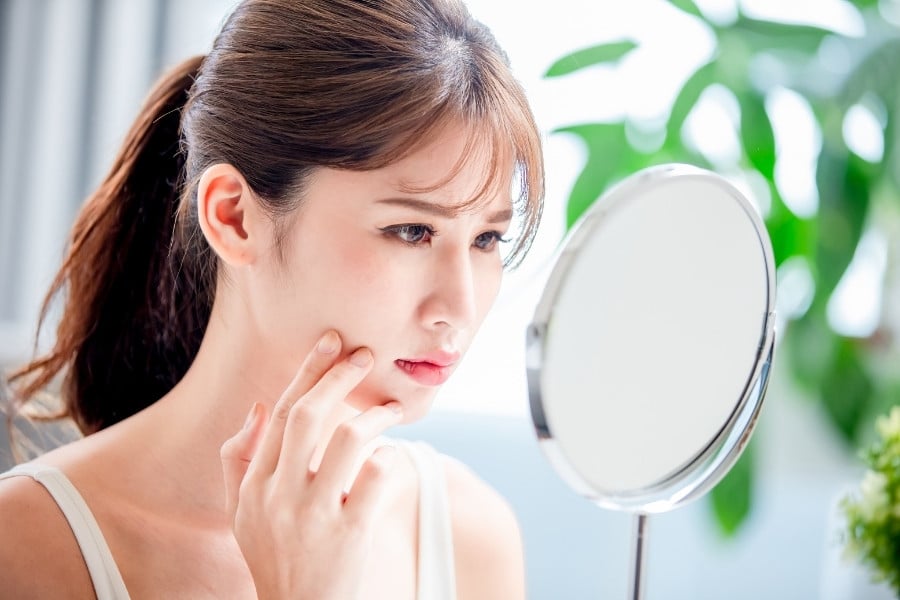It’s important to be aware of daily habits that may inadvertently prolong and worsen pigmentation issues such as dark spots and melasma. Dermatologists advise that it typically takes at least a month, if not three, for a dark spot to fade. Hence, even with the use of various whitening products, maintaining incorrect habits will hinder desired results.
The challenge in treating pigmentation lies in the overproduction of melanin beneath the skin’s surface, resulting in brown, red, or purple spots. This can be triggered by unprotected sun exposure, hormonal changes (such as pregnancy), or inflammatory responses from acne, pimple-popping, or insect bites.

Listed below are six common habits that hinder the fading of dark spots, along with suggested solutions:
Over-exfoliation or improper exfoliation
While exfoliation helps brighten and even out skin tone, overdoing it, especially with large scrub particles, can disrupt the skin’s protective barrier and cause inflammation. It is preferable to use chemical exfoliants 1-2 times a week.
Failing to differentiate between post-inflammatory hyperpigmentation (PIH) and post-inflammatory erythema (PIE)
PIH (brown spots) requires melanin suppression through ingredients like vitamin C, kojic acid, tranexamic acid, and licorice extract. PIE (red, pink, or purple marks) necessitates soothing ingredients such as niacinamide, azelaic acid, and centella asiatica extract. Choosing the wrong group of actives will slow down the improvement.

Combining too many brightening actives at once
While Vitamin C, retinol, and various exfoliating acids can enhance skin tone, using too many simultaneously can lead to skin irritation and dullness. The solution is to select one primary active ingredient, test it for a minimum of two weeks to observe the skin’s reaction, and then consider alternating between morning and night routines or using them on alternate days.
Neglecting to treat acne before addressing pigmentation
Active acne continues to produce new dark spots. Therefore, it is crucial to address acne first with suitable products or prescription medications, incorporating ingredients such as retinol, AHA/BHA, or niacinamide.
Lack of sun protection or reapplication
UV rays not only deepen existing dark spots but also contribute to overall skin darkening. Apply sunscreen every morning and reapply after approximately two hours.
Prolonged exposure to high temperatures
Extended periods of steaming, hot bathing, or exercising in hot environments can lead to prolonged skin inflammation and stimulate melanin production. Reduce the duration of hot showers and minimize exposure to high-temperature environments.
In summary, to effectively address pigmentation concerns like melasma and dark spots, it is essential to use the right products, consistently protect your skin with sunscreen, avoid irritants, and be patient. This holistic approach is the key to achieving long-lasting and noticeable improvements in skin tone and clarity.
“Ageless Asian Beauty: Uncover the Secret to Her Youthful Radiance”
No magic formula is required; Dilireba’s youthful and radiant complexion is a result of her consistent self-care routine. The actress maintains her “living doll” aesthetics with five simple yet effective habits that anyone can adopt. These accessible tips and tricks are the key to achieving and maintaining a vibrant, youthful appearance, even in the harsh world of show business.



































